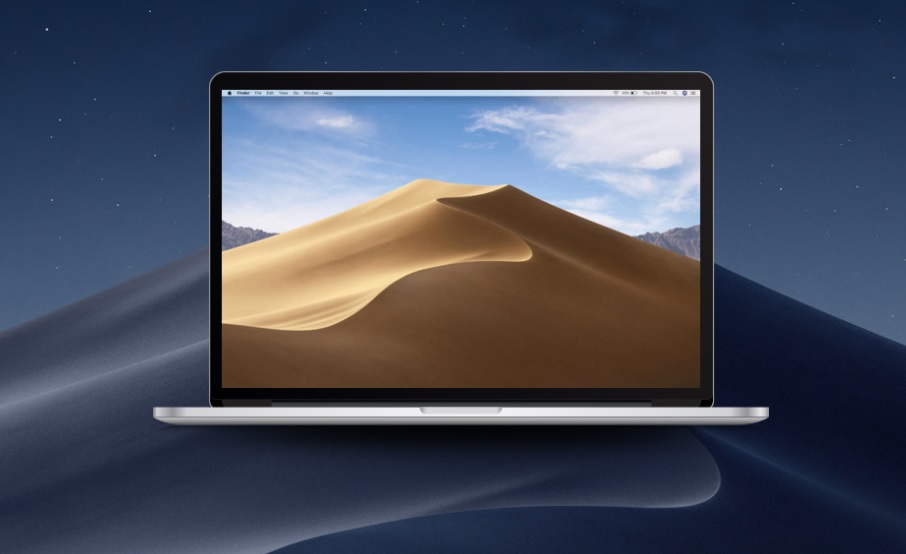Prep the macOS Mojave Installation. The macOS Recovery Environment now opens in the virtual machine. (This is the screen that every Mac displays when you hold down Cmd-R at startup.).
- The user name and password information entered should be your Mac user account details, not your Origin user name and password. Your Mac user account must be an Administrator account to grant the permissions needed to save the files. This was previously an issue for users running OS.
- CCleaner is one of the best apps to clean Mac which scans your computer to remove all types of files which are responsible to slow your Mac effectively. The tool helps you get rid of broken system permissions, temporary files, junk files, and other issues. Get CCleaner for Mac from here.
CCleaner is the number-one tool for fixing a slow Mac Download Ccleaner Mac for free and enjoy!
Mac running slow? A Mac collects junk and unused files just like a PC. Find and remove these files with the click of a button so your Mac can run faster. Speed up boot times with easy management of Startup items. Clean your Mac of old clutter. Clear up your recycle bin, temporary files and folders, broken permissions and more. Remove installed programs with the click of a button.
- Publisher
- Piriform Ltd.
- Publisher Site
- https://www.ccleanermac.net/
- Software License
- Free
- Platforms
- Windows 10, 8, 8.1, 7, Vista
- Total Downloads
- 0
When you delete any files or folders on your Mac, they aren't permanently removed. They find their place in the Trash bin, which needs additional clicks to delete them permanently. Sometimes if any file is locked or being used by another app, then it won't be deleted. Hence, you can't delete any file on your Mac.
We have listed down some of the fixes that should help you empty Trash on your Mac. The last fix is the ultimate one, and I would recommend you to go step-by-step so that you don't delete something important and then left with a malfunctioning app. Let me walk along with you through the guide!
Can't Empty Trash on Mac
Check if the file is in use by any app
If you get an error about 'File in Use', then try closing the app that is using the file (in case you know the app). Alternatively, you can also close all the running apps to make sure that the file is no more being used by any of the apps. Now try to empty trash, if it still doesn't clear the dump, keep reading.
Force Empty Trash in Mac OS X When File is Locked or in Use
In case you are getting a Locked file error, then press and hold the Option key, go to Finder → Empty Trash. This should have surely helped you in clearing Trash. The Option key signals macOS to bypass the locked files. Anyways, even if this didn't work out for you, keep reading for more fixes.
Use third-party utilities
There are many third-party utility apps to forcibly empty the Trash folder. If you have them installed, give it a try. I would personally not recommend downloading and using them. That's because they ultimately flash Terminal commands to delete Trash files, which we have given below, so have a look.
Empty Trash on Mac Using Terminal
This is the ultimate step you should take, only if all of the above have failed. As these commands will delete locked files without alerting you anything. Make sure you do exactly as it is written below.
Step #1. Open Terminal on your Mac.
Step #2. Now type, sudo rm –Rfollowed by space. Leaving a space is mandatory, so do not miss that step. And yes, DO NOT HIT RETURN AFTER YOU ENTER THE COMMAND.
Step #4. It's now time to open the Trash folder from the Dock.
Step #5. Select all the files and folders from the Trash folder, drag and drop them into Terminal window. Doing this will add the path of each file and folder to the 'Remove' command we entered at Step #3.
Step #6. Now you can hit Return and then enter your administrator password to continue the operation.
The deleting process will begin and might take a couple of minutes, depending on the size of files and folders you are deleting.

Try out this trick as well, if nothing seems to be working for you.
Step #1. First off, turn off your Mac. Then, you need to hold down command+R when starting your computer. Keep holding the keys until Apple logo appears on the screen.
Your Mac will enter into recovery mode.
Step #2. In the top menu bar, you have to click on utilities. In the drop down, you need to click on terminal. Next, it will open up a terminal in order to run a command.
Step #3. Next, you will have to type in the command cs0util disable and press return.
Then after, you have to click on the Apple on the top left and click restart.
Step #4. Next up, empty your trash as usual. Convert webp to jpg mac.
Ccleaner Mac Os Mojave Dmg
Wrap up
Assuming you have been able to empty the trash on your Mac. As these solutions have worked for many users, I'm expecting they have clicked for you as well. It would be really nice if you share your feedback and let us know whether you have found success using these fixes.
You might want to catch up with these troubleshooting guides as well:
Ccleaner For Apple Mac
The founder of iGeeksBlog, Dhvanesh, is an Apple aficionado, who cannot stand even a slight innuendo about Apple products. He dons the cap of editor-in-chief to make sure that articles match the quality standard before they are published.
- https://www.igeeksblog.com/author/dhvanesh/
- https://www.igeeksblog.com/author/dhvanesh/
- https://www.igeeksblog.com/author/dhvanesh/
- https://www.igeeksblog.com/author/dhvanesh/
